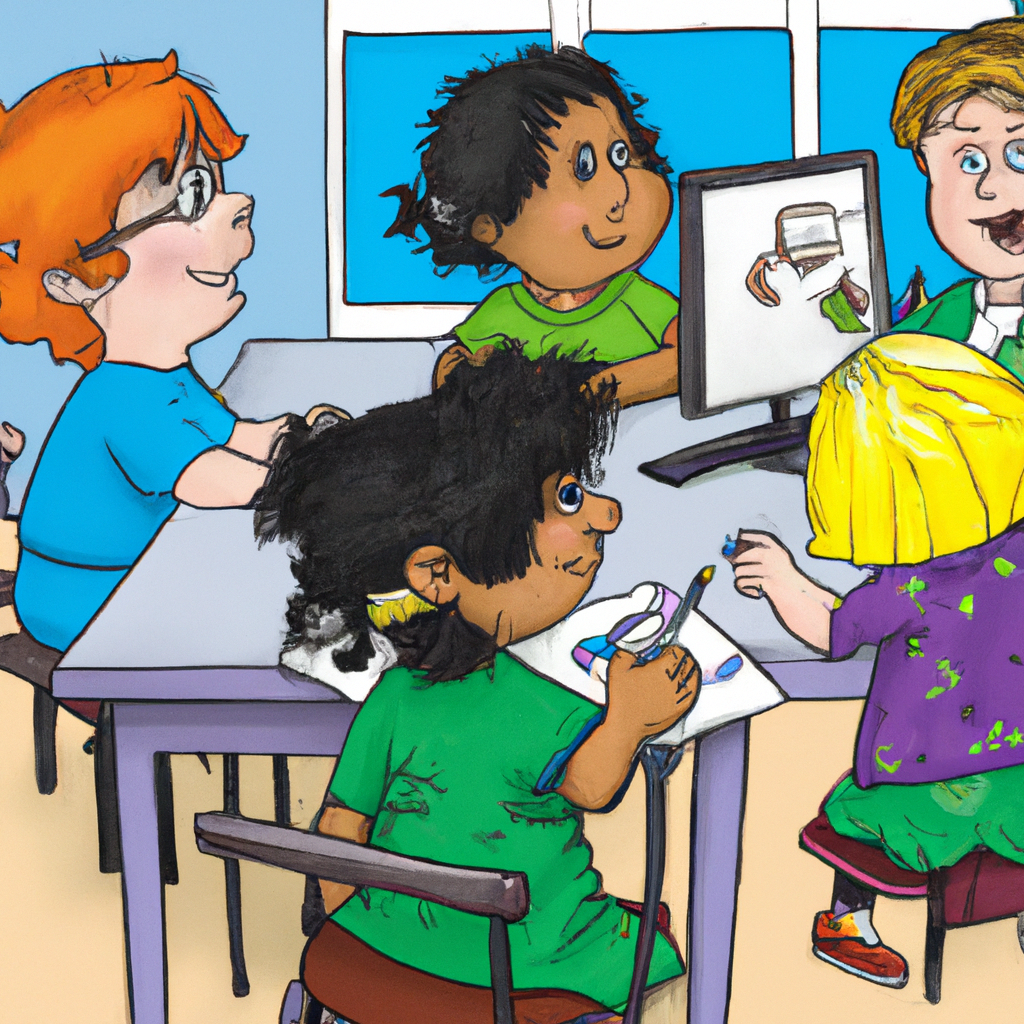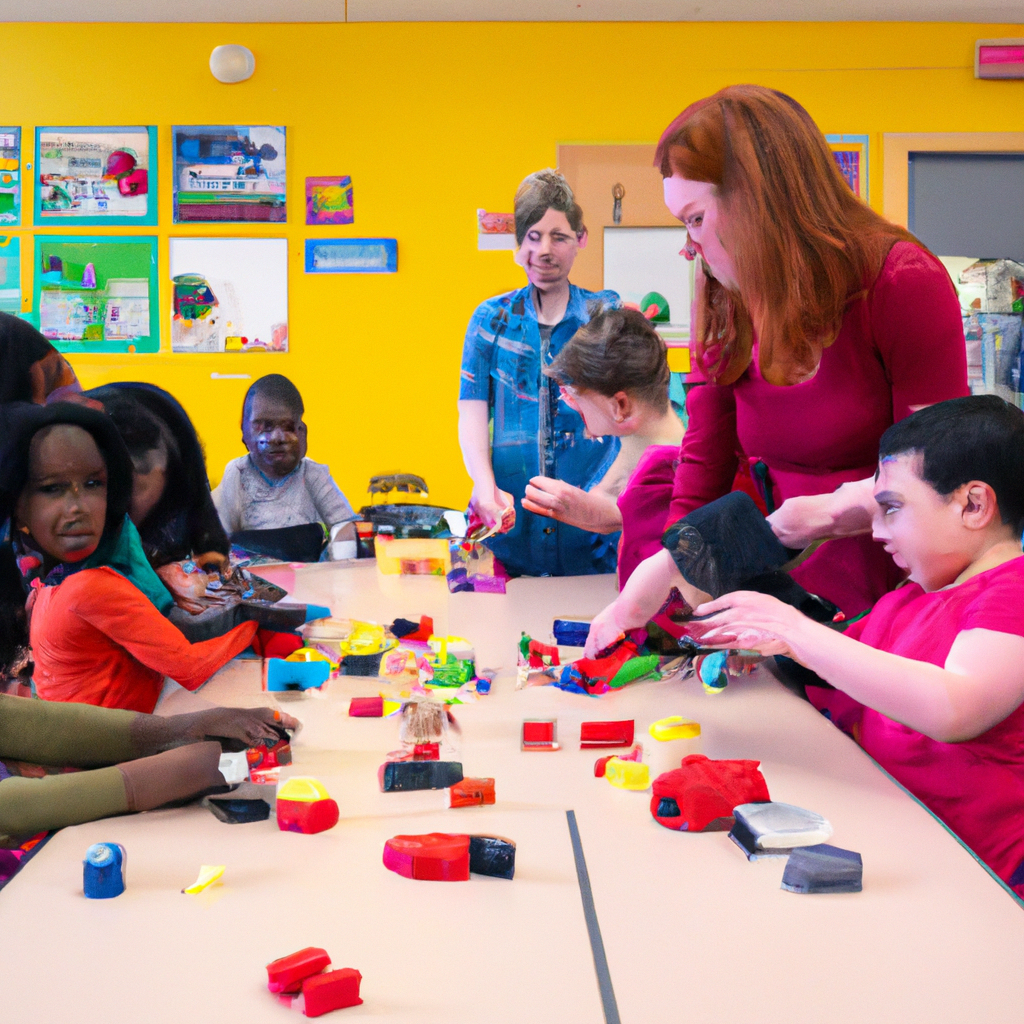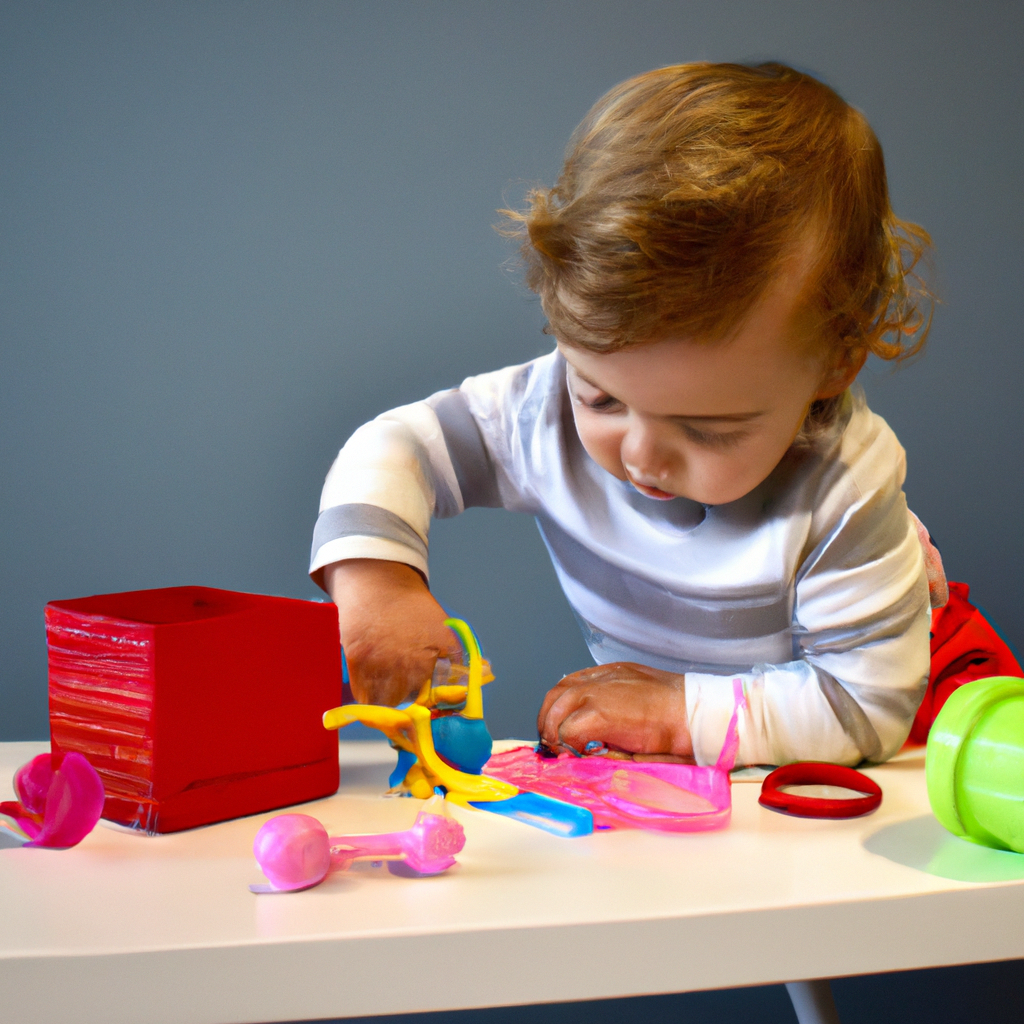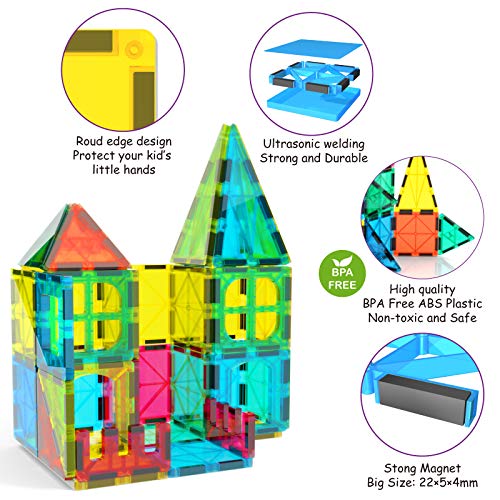STEM Toys
When Did STEM Toys Begin

I have always been fascinated by the world of STEM toys. It is incredible to see the evolution of these educational toys over time, sparking curiosity and passion for science, technology, engineering, and math in young minds.
In this article, we’ll delve into the origins of STEM toys, tracing their journey from humble beginnings to the innovative products we see today. Join me as we explore the key milestones, the impact of technological advancements, and the influential figures who have shaped the history of STEM toys.
Key Takeaways
- STEM toys gained popularity in the early 1900s.
- The Erector Set, invented in 1913, was one of the earliest STEM toys.
- Early STEM toys focused on basic concepts like building blocks and puzzles.
- STEM toys prepared children for future careers in STEM fields.
Early Origins of STEM Toys
STEM toys have been around since the early 1900s when they began to gain popularity. These early inventions were created to provide educational benefits to children while also sparking their interest in science, technology, engineering, and mathematics. One of the earliest STEM toys was the Erector Set, invented by A.C. Gilbert in 1913. This construction toy allowed children to build structures and learn about basic engineering principles.
Another early STEM toy was the chemistry set, which introduced children to the world of chemistry through hands-on experiments. These early inventions paved the way for the development of more sophisticated STEM toys that we see today.
STEM toys have always been recognized for their educational benefits. They provide children with opportunities to develop critical thinking skills, problem-solving abilities, and creativity. By engaging in hands-on play, children are able to explore and understand complex concepts in a fun and interactive way. STEM toys also encourage collaboration and teamwork, as children often work together to solve problems or build structures.
As technology continues to advance, the impact on STEM toys is undeniable. The integration of technology into these toys has allowed for more interactive and immersive experiences. From coding robots to virtual reality kits, technological advancements have enhanced the educational value of STEM toys, providing children with even more opportunities to explore and learn.
The Impact of Technological Advancements on STEM Toys
With the rise of technology, advancements have greatly influenced the impact of STEM toys. These toys play a crucial role in fostering creativity and innovation in children, helping them develop the skills necessary for success in a rapidly advancing technological landscape. STEM toys not only provide a fun and engaging way for kids to learn about science, technology, engineering, and math, but they also encourage critical thinking, problem-solving, and collaboration.
As technology continues to evolve at an unprecedented rate, the future of STEM toys looks promising. With the integration of artificial intelligence, virtual reality, and robotics, these toys will become even more interactive and immersive, providing children with hands-on experiences that simulate real-world scenarios. This will enable kids to explore complex concepts and develop a deeper understanding of STEM subjects.
Moreover, advancements in technology will also allow for more personalized and adaptive learning experiences. STEM toys will be able to tailor their content to the individual needs and interests of each child, fostering a love for learning and encouraging them to pursue careers in STEM fields.
Key Milestones in the Development of STEM Toys
To understand the key milestones in the development of STEM toys, you can delve into their historical progression and see how they have evolved over time. STEM toys have gone through various developmental stages and have been influenced by market trends.
In the early stages, STEM toys focused on basic concepts such as building blocks and puzzles, encouraging children to develop their problem-solving skills. These toys laid the foundation for more complex STEM toys that would emerge later.
As technology advanced, so did STEM toys. The introduction of electronic components and robotics led to the creation of interactive toys that allowed children to explore programming and engineering concepts in a hands-on way. These toys became increasingly popular as parents recognized the importance of preparing their children for future careers in STEM fields.
Market trends also played a significant role in the development of STEM toys. With the growing emphasis on diversity and inclusion, manufacturers began to create toys that catered to a wider range of interests and abilities. This led to the development of STEM toys that focused on different subjects like biology, chemistry, and astronomy, expanding the options available to children.
In conclusion, the development of STEM toys has seen significant milestones, from basic building blocks to advanced robotics. These toys have evolved to meet the changing market demands and have become an essential tool in preparing children for the future.
Now, let’s explore the evolution of STEM toys in education, where they have become a valuable asset in classrooms around the world.
The Evolution of STEM Toys in Education
When exploring the evolution of STEM toys in education, you’ll see how they have become an integral part of classroom learning. One of the key factors in promoting STEM education is the role of parents. Parents play a vital role in encouraging and supporting their children’s interest in science, technology, engineering, and math. They can actively seek out STEM toys that align with the curriculum and provide hands-on learning experiences. By integrating STEM toys into the curriculum, educators can enhance the learning process and make it more engaging for students. These toys allow students to apply theoretical knowledge to real-world situations, fostering critical thinking, problem-solving, and creativity.
STEM toys offer a wide range of benefits, including promoting collaboration, improving spatial skills, and boosting confidence in STEM subjects. They provide a tangible and interactive way for students to explore scientific concepts and develop a deeper understanding of them. Additionally, STEM toys help to bridge the gender gap in STEM fields by encouraging both boys and girls to explore their interests and capabilities.
Transitioning into the next section about influential figures in the history of STEM toys, it is fascinating to see how these toys have evolved over time and the impact they have had on education.
Influential Figures in the History of STEM Toys
Explore the impact influential figures have had on the history of STEM toys, as they have shaped the way children engage with science, technology, engineering, and math.
Throughout the years, inventors have played a crucial role in developing educational toys that promote learning and creativity in these fields. One such figure is Margaret Knight, an inventor known for her contributions to the toy industry. Knight invented a machine to produce square-bottomed paper bags, which revolutionized the packaging industry. Her invention inspired the creation of building blocks and puzzles, which are now popular STEM toys that enhance spatial reasoning and problem-solving skills.
Another influential figure is Seymour Papert, a mathematician, computer scientist, and educator. Papert is widely recognized as the father of educational computing. He developed the Logo programming language, which introduced children to the world of coding through a user-friendly interface. Logo and its turtle graphics feature allowed children to experiment with programming concepts and develop logical thinking skills. Papert’s work laid the foundation for the integration of technology in educational toys, making them more interactive and engaging for young learners.
These inventors, among many others, have made significant contributions to the field of STEM toys, bringing educational benefits to children worldwide. Their innovative ideas and inventions have sparked curiosity and inspired generations of young minds to explore the fascinating world of science, technology, engineering, and math.
Frequently Asked Questions
What Are the Benefits of STEM Toys for Children’s Cognitive Development?
STEM toys offer numerous benefits for children’s cognitive development. These toys promote critical thinking, problem-solving skills, and creativity. By engaging in hands-on activities, children learn to analyze and solve complex problems, which enhances their cognitive abilities.
STEM toys also encourage curiosity and exploration, fostering a love for learning. Furthermore, these toys help develop important skills like spatial awareness, logical reasoning, and mathematical thinking.
Overall, STEM toys provide a fun and educational way for children to enhance their cognitive development.
How Have STEM Toys Evolved to Include More Diverse and Inclusive Representation?
STEM toys have evolved to include more diverse and inclusive representation through various initiatives. Toy companies are now actively working to ensure that their products reflect the diversity of the real world. They are incorporating characters from different ethnicities, genders, and abilities, and showcasing a wide range of interests and talents.
These efforts aim to provide children with toys that not only foster their STEM skills but also promote inclusivity and representation, helping them develop a broader worldview.
What Are Some Common Misconceptions About STEM Toys?
Misconceptions about STEM toys are quite common. Many people believe that STEM toys are only for boys or are too advanced for young children. However, these are just myths.
STEM toys are designed to be inclusive and accessible to children of all genders and ages. They promote critical thinking, problem-solving, and creativity.
Additionally, some people think that STEM toys are expensive, but there are affordable options available.
Overall, it’s important to debunk these misconceptions and recognize the value of STEM toys for all children.
How Do STEM Toys Contribute to Fostering Creativity and Problem-Solving Skills?
STEM toys contribute to fostering creativity and problem-solving skills by providing hands-on experiences that encourage innovation and critical thinking. These toys engage children in activities that require them to think critically, solve problems, and come up with creative solutions.
Are There Any Ethical Concerns or Potential Drawbacks Associated With the Use of STEM Toys in Education?
When it comes to STEM toys, there are indeed some ethical concerns and potential drawbacks to consider.
One interesting statistic is that a study found that certain STEM toys may reinforce gender stereotypes, as they tend to be marketed more towards boys than girls. This raises concerns about inclusivity and the impact it may have on girls’ interest and participation in STEM fields.
Additionally, there is a potential drawback in relying too heavily on STEM toys for education, as it may limit children’s exposure to other important learning experiences.
Conclusion
In conclusion, STEM toys have come a long way since their early origins. The impact of technological advancements has revolutionized the way these toys are designed and enjoyed.
From the invention of the first coding toys to the integration of virtual reality in educational play, there have been key milestones in the development of STEM toys.
Today, these toys play a crucial role in education, fostering curiosity and critical thinking skills in children. As the adage goes, ‘Knowledge is power.’ And with STEM toys, the power to learn and explore knows no bounds.
Tina is the heart and soul behind Toddler Ride On Toys. With a passion for early childhood education and a deep understanding of child development, Tina ensures that every piece of content on our website reflects our commitment to playful learning. Her expertise in Montessori, Preschool, STEM, and Waldorf education philosophies helps shape our website into a valuable resource for parents, caregivers, and educators.
STEM Toys
How to Sign up for Amazon STEM Toys

Have you ever wondered how to sign up for Amazon STEM Toys? Don’t worry, I have the answer for you!
In this article, I’ll guide you through the process of accessing the Amazon STEM Toys section, creating an account, and managing your subscription.
Signing up for Amazon STEM Toys comes with a multitude of benefits, from educational toys to convenient delivery options.
So, let’s dive in and discover how you can start exploring the world of STEM toys with Amazon.
Key Takeaways
- Access to a wide range of educational toys
- Exclusive discounts and deals
- A step-by-step guide on navigating to the Amazon STEM Toys section
- Tips on exploring the wide variety of educational toys available
What Is Amazon STEM Toys?
Amazon STEM Toys are educational toys designed to introduce kids to science, technology, engineering, and math. What’s the hype about these toys? Well, they offer a wide range of benefits for children’s learning and development.
First and foremost, Amazon STEM Toys are specifically created to make learning fun and engaging. They provide hands-on experiences that encourage critical thinking, problem-solving, and creativity. By playing with these toys, children can develop important skills such as logical reasoning, spatial awareness, and mathematical thinking.
Furthermore, Amazon STEM Toys promote an early interest in STEM subjects. They expose children to concepts and principles that they might encounter later in school, giving them a head start in these areas. By engaging with these toys, children can also develop a growth mindset, where they embrace challenges and persist in the face of difficulties.
In addition, Amazon STEM Toys offer a wide variety of options to suit different ages and interests. From building sets and coding kits to science experiments and robotics, there is something for every child. This allows them to explore different areas of STEM and discover their passions.
Now that we’ve explored the educational benefits of Amazon STEM Toys, let’s delve into the various benefits of signing up for these toys.
Benefits of Signing up for Amazon STEM Toys
One major benefit of joining the STEM Toys program is the opportunity to receive discounted educational products. As a member, you can enjoy various advantages that contribute to the benefits of STEM education and the impact of STEM toys on child development.
Here are some key benefits of signing up for Amazon STEM Toys:
- Access to a wide range of educational toys: With Amazon STEM Toys, you gain access to a vast selection of toys that promote learning in science, technology, engineering, and mathematics. These toys are designed to engage children’s curiosity and foster critical thinking skills.
- Exclusive discounts and deals: By signing up for the program, you can enjoy exclusive discounts and deals on STEM toys. This allows you to provide your child with high-quality educational products at a more affordable price.
Incorporating STEM education into your child’s playtime has numerous advantages. It helps develop problem-solving skills, encourages creativity, and promotes a love for learning. Furthermore, STEM toys enhance cognitive abilities, improve spatial awareness, and foster collaboration and teamwork.
Transitioning into the subsequent section on how to access the Amazon STEM Toys section, you will learn about the simple steps to explore the wide array of educational products available to support your child’s development.
How to Access the Amazon STEM Toys Section
Finding the STEM Toys section on Amazon is a simple process that can be done in just a few steps.
First, I navigate to the Amazon homepage and click on the ‘Toys & Games’ category.
From there, I scroll down and select the ‘STEM Toys’ option, which takes me to the dedicated section filled with a wide variety of educational toys.
It’s a convenient way to explore and choose from a range of STEM toys for kids of all ages, making learning fun and engaging.
Finding the STEM Toys
To easily locate the STEM toys you’re interested in, simply use the search bar and filter options on the website. Here’s how you can find the best STEM toys:
- Start by typing ‘STEM toys’ or a specific toy name in the search bar. This will bring up a list of relevant results.
- Use the filter options on the left-hand side of the page to narrow down your search. You can filter by price, age range, brand, and customer ratings.
- Compare prices of STEM toys from different sellers. Amazon often offers competitive prices, but it’s always a good idea to check if there are any discounts or deals available.
- Read customer reviews and ratings to get a better understanding of the quality and educational value of the toy.
Navigating to the Section
If you’re looking for the section with STEM toys, simply use the search bar and filter options on the website. Exploring the STEM toy market can be an exciting and educational experience for children of all ages. STEM, which stands for Science, Technology, Engineering, and Mathematics, is a field that encourages critical thinking, problem-solving, and creativity. By incorporating STEM toys into playtime, children can develop important skills that will benefit them in the future. From building blocks to coding robots, there is a wide variety of toys available to cater to different interests and age groups. To make it easier for you, I have created a table below with some popular STEM toys and their key features:
| Toy Name | Key Features |
|---|---|
| Building | Develops spatial reasoning skills |
| Coding | Teaches programming fundamentals |
| Science Kit | Encourages scientific exploration |
| Engineering | Promotes problem-solving skills |
Creating an Amazon Account
Creating an Amazon account is a straightforward process that requires some basic information. You’ll need to provide your name, email address, and a password. Once you’ve provided this information, you can easily create an account by following the step-by-step instructions provided on the website.
Having an Amazon account offers several benefits. With an account, you’ll be able to track your orders, access personalized recommendations, and enjoy exclusive deals and discounts. These perks make shopping on Amazon even more convenient and rewarding.
Required Account Information
You’ll need to provide your name, email address, and password to create an account for Amazon STEM Toys. These are the basic pieces of information required to set up your account and start exploring the world of STEM toys on Amazon. Additionally, you may have the option to provide additional personal information, such as your address or phone number, to enhance your shopping experience. However, these fields are typically not required during the initial account creation process.
To illustrate the required personal information, here’s a table:
| Information | Required |
|---|---|
| Name | Yes |
| Email Address | Yes |
| Password | Yes |
| Address | Optional |
| Phone Number | Optional |
Once you’ve entered your name, email address, and password, you can proceed to the next section to complete the account creation process and start exploring all the STEM toys Amazon has to offer.
Account Creation Process
Once you’ve provided your required account information, proceed to the next section to complete the process and start exploring.
Creating an account on Amazon is essential for a secure and personalized shopping experience. To enhance account security, it is advisable to choose a strong password that includes a combination of letters, numbers, and symbols. Additionally, enabling two-factor authentication provides an extra layer of protection.
In case you encounter any issues during the account creation process, Amazon offers troubleshooting tips on their website. These tips cover common problems such as forgotten passwords or difficulties accessing your account. By following these troubleshooting tips, you can quickly resolve any issues and proceed with creating your account.
Now that you have successfully created your account, let’s delve into the benefits of having an Amazon account.
Benefits of Having Account
To fully enjoy the benefits of having an account, take advantage of personalized recommendations and exclusive deals. Signing up for an account on Amazon opens up a whole new world of convenience and perks. Here are some advantages of signing up:
- Personalized recommendations: With an account, Amazon can suggest products based on your browsing and purchase history, making it easier for you to discover new STEM toys tailored to your interests.
- Exclusive deals: Account holders often receive exclusive discounts and promotions on STEM toys, saving you money on your purchases.
- Faster checkout: By saving your shipping and payment preferences, you can breeze through the checkout process, making it quick and efficient.
- Order tracking: With an account, you can easily track your STEM toy orders, ensuring you know exactly when they will arrive.
Now, let’s explore how to navigate to the STEM toys category without any further delay.
Navigating to the STEM Toys Category
Simply click on the ‘STEM Toys’ category to easily navigate to the selection of educational toys available on Amazon. This category is specifically designed to help parents and educators find the best STEM toys for their children.
When it comes to finding STEM toy reviews, Amazon makes it easy by providing a platform for customers to share their experiences and opinions. By reading these reviews, you can get a better understanding of the quality and educational value of different STEM toy brands. This is especially helpful when comparing STEM toy brands, as you can see what other customers liked or disliked about each brand.
Once you’re in the ‘STEM Toys’ category, you’ll find a wide range of options to choose from. Amazon offers toys for various age groups and skill levels, ensuring that you can find the perfect STEM toy for your child’s needs. From building sets to coding kits, there are endless possibilities to explore and engage your child’s curiosity.
As you browse through the Amazon STEM toy selection, you’ll notice that each product has a detailed description, including information about its educational benefits and features. This allows you to make an informed decision based on your child’s interests and learning goals.
Exploring the Amazon STEM Toys Selection
When it comes to choosing the right STEM toys for children, it’s important to consider popular STEM toy brands and age-appropriate options.
Popular STEM toy brands like LEGO, Snap Circuits, and Kano offer a wide range of educational toys that are both engaging and challenging.
Additionally, age-appropriate STEM toy options ensure that children can develop their skills and knowledge at a level suitable for their age and abilities.
Popular STEM Toy Brands
There’s a wide selection of popular STEM toy brands available for purchase. These brands have gained popularity due to the numerous benefits that STEM toys offer.
One popular brand is LEGO, known for their building sets that enhance problem-solving and creativity skills.
Another well-known brand is Snap Circuits, which provides hands-on experience with electronics and circuitry.
Additionally, there’s Osmo, a brand that combines physical play with digital technology to promote learning in various subjects.
Sphero is another popular brand, offering programmable robots that introduce coding concepts to children.
STEM toys from these brands not only entertain kids but also foster critical thinking, problem-solving, and innovation skills. These toys provide a fun and engaging way for children to learn important STEM concepts.
Now, let’s explore age-appropriate STEM toy options.
Age-Appropriate STEM Toy Options
After exploring popular STEM toy brands, let’s now delve into age-appropriate STEM toy options.
STEM toys provide numerous benefits for children, including fostering critical thinking, problem-solving skills, and creativity.
For toddlers and preschoolers, building blocks and shape sorters can help develop fine motor skills and spatial awareness.
As children grow older, construction sets, such as LEGO or K’NEX, allow them to apply engineering principles while building complex structures.
Coding toys, like Botley or Cubetto, introduce basic programming concepts to elementary school-aged children.
For middle and high schoolers, science kits and robotics sets provide hands-on learning experiences in physics, chemistry, and engineering.
It’s important to choose toys that align with a child’s age and developmental stage to maximize their learning potential.
Now that we have explored age-appropriate STEM toy options, let’s move on to adding these engaging toys to your cart.
Adding STEM Toys to Your Cart
To add STEM toys to your cart, simply click on the ‘Add to Cart’ button next to the item you want. Amazon makes it easy to organize your cart and keep track of your recommended toys. Here is a table showcasing some popular STEM toys available on Amazon:
| Toy Name | Age Range |
|---|---|
| Lego Boost | 7-12 years |
| Snap Circuits | 8-15 years |
| Ozobot Bit | 6+ years |
| Sphero SPRK+ | 6+ years |
| Kano Computer Kit | 6+ years |
These toys cover a range of ages and offer hands-on learning experiences in various STEM fields. Once you have added the desired toys to your cart, it’s important to review your cart before proceeding to checkout. This allows you to double-check that you have all the items you want and make any necessary adjustments. After reviewing your cart, you can proceed to checkout and complete your purchase. It’s always a good idea to review your cart before finalizing your order to ensure that you have selected the right items and quantities.
Reviewing Your Cart and Proceeding to Checkout
After adding the STEM toys to my cart, it’s important to review my cart before proceeding to checkout. This step ensures that I have selected the correct items and quantities. Here are four key things to consider when reviewing your cart:
- Double-check the items: Take a moment to review the products in your cart and make sure you have chosen the ones you intended to purchase. Verify that the quantities are accurate as well.
- Check for any discounts or promotions: Look for any applicable discounts or promotions that may be applied to your purchase. This can help you save money on your STEM toy purchase.
- Review the total cost: Take a look at the total cost of your order, including any additional fees such as shipping or taxes. Make sure you are comfortable with the amount before proceeding to payment.
- Proceed to the payment process: Once you have reviewed your cart and are satisfied with your selections and the total cost, click on the ‘Proceed to Checkout’ button to begin the payment process.
Now that we have reviewed our cart and are ready to proceed to checkout, the next step is entering our delivery information.
Entering Your Delivery Information
Make sure you enter your accurate delivery information to ensure that your STEM toys are delivered to the correct address.
When you reach the delivery information section during the checkout process, you will have a few options to choose from. First, you can select the standard delivery option, which usually takes around 3 to 5 business days.
If you need your toys sooner, you can opt for expedited delivery, which will arrive in 1 to 2 business days. Some items may even be eligible for same-day delivery or Amazon Prime’s free two-day shipping.
After you have chosen your preferred delivery option, you will need to enter your payment details. This includes your credit card information or any saved payment methods you have on file. Amazon takes security seriously, so you can rest assured that your payment information will be encrypted and protected.
Once you have entered your payment details, you can proceed to the next step of selecting a payment method.
Selecting a Payment Method
After entering your delivery information, the next step in signing up for Amazon STEM Toys is selecting a payment method. This is where you choose how you want to pay for your purchase. Amazon offers various payment options, including credit cards, debit cards, and gift cards. To select a payment method, you can either choose an already saved option or add a new one by entering the relevant details.
When it comes to finding discounts and comparing prices, Amazon makes it easy. The website often displays discounted prices or offers special deals on STEM toys. You can also compare prices from different sellers, allowing you to choose the best option for your budget. Additionally, Amazon frequently offers promotions, such as free shipping or discounts for Prime members.
Once you have selected your payment method and reviewed your order, you can proceed to the next section, ‘Reviewing and Confirming Your Order.’
Reviewing and Confirming Your Order
When it comes to online shopping, the order confirmation process is a crucial step to ensure a smooth transaction. It allows you to review your order details and ensure that everything is correct before finalizing the purchase.
Order Confirmation Process
Once you’ve completed the order, you’ll receive a confirmation email from Amazon. This email serves as your order confirmation and contains important information such as the items you’ve purchased, the total cost, and the estimated delivery date. It’s essential to review this email to ensure that everything is correct.
To help you track your orders easily, Amazon provides a tracking number that you can use to monitor the progress of your package. Simply click on the tracking number link in the email, and you’ll be directed to the carrier’s website where you can see the real-time updates. By tracking your orders, you can stay informed about the delivery status and make any necessary arrangements.
Now, let’s move on to the next section where we’ll delve into reviewing the details of your order.
Reviewing Order Details
To ensure accuracy, take a moment to review the details of your order before proceeding.
When reviewing your order status, it is important to check the delivery date as well.
By reviewing your order, you can confirm that the items you selected are correct, the shipping address is accurate, and the delivery date aligns with your expectations.
This step is crucial to avoid any potential issues or delays in receiving your Amazon STEM toys.
Double-checking the order status and delivery date ensures that you have all the essential information and can plan accordingly.
Once you have reviewed the order details, you can proceed with confidence, knowing that you have taken the necessary steps to ensure correct delivery of your STEM toys.
Ensuring Correct Delivery
Make sure you review the shipping address and delivery date for your order to ensure accurate and timely delivery. Here are four important things to consider when ensuring the timely delivery of your Amazon STEM Toys order:
- Double-check the shipping address: It’s crucial to review the address you provided during the checkout process. Any mistakes or typos could result in a delay or even the package being delivered to the wrong location.
- Verify the delivery date: Take a moment to confirm the estimated delivery date provided by Amazon. This will give you an idea of when to expect your package and help you plan accordingly.
- Opt for expedited shipping if needed: If you’re in a hurry to receive your STEM Toys, consider choosing expedited shipping during checkout. This option usually guarantees faster delivery, but keep in mind that additional fees may apply.
- Track your package location: Once your order is shipped, Amazon will provide a tracking number. Use this number to monitor the progress of your package and stay updated on its location.
Tracking Your Amazon STEM Toys Order
When you’ve ordered your STEM toys from Amazon, you can easily track your order using the provided tracking number. Tracking your package gives you peace of mind and allows you to stay updated on its progress. Amazon offers various tracking options to suit your preferences. You can choose to receive email notifications or use the Amazon mobile app to keep tabs on your delivery. By entering the tracking number on the Amazon website or app, you can view real-time updates on the status of your package, including its estimated delivery time.
To further illustrate the convenience of tracking your Amazon STEM toys order, here is a table showcasing the different tracking options available:
| Tracking Option | Description |
|---|---|
| Email Notifications | You will receive regular email updates regarding the status of your order. This includes notifications for when your package is shipped, out for delivery, and delivered. |
| Amazon Mobile App | Downloading the Amazon mobile app allows you to track your order on the go. You can easily check the status of your package, view the estimated delivery time, and even receive push notifications for any updates. |
| Amazon Website | Simply visit the Amazon website and enter your tracking number in the designated tracking section. This will provide you with real-time updates on the whereabouts of your package, including the estimated delivery time. |
Tracking your Amazon STEM toys order is a straightforward process that ensures you are always aware of its progress. By utilizing these tracking options, you can stay informed about the estimated delivery time and make any necessary arrangements. With your order on its way, let’s now explore how to return or exchange Amazon STEM toys if needed.
Returning or Exchanging Amazon STEM Toys
After tracking your Amazon STEM Toys order and receiving it, you may find that the item doesn’t meet your expectations or that you received the wrong product. In such cases, returning or exchanging the toy is a simple process. Here are the steps to follow:
- Start by accessing your Amazon account and navigating to the ‘Returns & Orders’ section.
- Locate the STEM toy you wish to return or exchange and select the appropriate option.
- Choose whether you want a refund or an exchange for a different item.
- Print the return label provided by Amazon and securely package the toy.
- Drop off the package at a designated shipping location or schedule a pickup.
Returning or exchanging your Amazon STEM toy is hassle-free, and the process ensures that you are satisfied with your purchase. Once you have successfully completed this step, you can move on to managing your Amazon STEM Toys subscription.
Transitioning into the subsequent section about managing your Amazon STEM Toys subscription, you have the option to customize your subscription preferences and explore the wide range of STEM toys available for future deliveries.
Managing Your Amazon STEM Toys Subscription
To manage your Amazon STEM Toys subscription, simply go into your account and customize your preferences to explore the variety of STEM toys available for future deliveries.
Managing your subscription allows you to have control over the toys you receive, ensuring that they align with your child’s interests and developmental needs.
Once you are logged into your account, navigate to the ‘Manage Subscriptions’ section where you can easily make changes to your subscription. From here, you can choose to add or remove toys, adjust the delivery frequency, and even skip a delivery if needed.
If you find that you no longer wish to continue with your subscription, canceling is just as simple. By selecting the ‘Cancel Subscription’ option, you can end your subscription at any time. It’s important to note that canceling your subscription will stop any future deliveries, but it will not refund any remaining subscription fees.
Now that you understand how to manage and cancel your Amazon STEM Toys subscription, let’s move on to troubleshooting tips for the sign-up process.
Troubleshooting Tips for Amazon STEM Toys Sign-Up
If you’re having trouble with the subscription process for Amazon’s STEM toys, there are a few troubleshooting tips that can help. As someone who has experienced some common problems myself, I understand how frustrating it can be. Here are some tips to get you back on track:
- Check your internet connection: A weak or unstable internet connection can cause issues during the sign-up process. Make sure you have a strong and stable connection before attempting to subscribe.
- Clear your browser cache: Sometimes, your browser’s cache can interfere with the sign-up process. Clearing your cache can help resolve any issues. Simply go to your browser’s settings and find the option to clear your cache.
- Disable browser extensions: Certain browser extensions or add-ons can conflict with the sign-up process. Temporarily disable any extensions you have installed and try again.
- Try a different browser: If you’re still experiencing problems, try using a different browser. Sometimes, certain browsers have compatibility issues with certain websites.
- Contact customer support: If none of the above tips work, don’t hesitate to reach out to Amazon’s customer support. They have a dedicated team to assist with subscription-related issues.
Frequently Asked Questions
Can I Sign up for Amazon STEM Toys if I Live Outside the United States?
Yes, you can sign up for Amazon STEM Toys even if you live outside the United States. Amazon has extended its international availability for STEM toys, allowing customers from various countries to enjoy these educational products.
However, it is important to note that shipping fees may apply depending on your location. Make sure to check the shipping details and any additional charges before placing your order.
Are There Any Age Restrictions for Signing up for Amazon STEM Toys?
When it comes to signing up for Amazon STEM Toys, age restrictions and international eligibility are important factors to consider.
For example, there may be age restrictions in place to ensure that the toys are suitable for certain age groups.
Additionally, while Amazon STEM Toys may be available in the United States, it’s worth checking if they are also available in other countries.
It’s always a good idea to review the terms and conditions to determine if there are any limitations based on age or location.
Can I Purchase Amazon STEM Toys Without Creating an Amazon Account?
Sure, you can purchase Amazon STEM Toys without creating an account. However, creating an Amazon account has its benefits.
By signing up, you gain access to exclusive deals, personalized recommendations, and a convenient shopping experience. Additionally, having an account allows you to track your orders, manage your payment methods, and easily return items if needed.
While alternative purchasing options exist, creating an Amazon account provides a seamless and enhanced shopping experience.
Is There a Limit to How Many STEM Toys I Can Add to My Cart?
There’s no limit to how many STEM toys you can add to your cart on Amazon. These toys are not only fun, but also provide numerous benefits for your child’s development.
When choosing STEM toys, it’s important to consider the age group and their interests. Look for toys that encourage problem-solving, critical thinking, and creativity.
Can I Cancel My Amazon STEM Toys Subscription at Any Time?
Yes, you can cancel your Amazon STEM Toys subscription at any time. The cancellation policy allows for easy termination of the subscription whenever you decide.
To cancel, simply go to your account settings and navigate to the subscription section. From there, you can select the option to cancel.
It’s important to note that there is no refund process for the subscription fee, as it is a monthly recurring charge.
Conclusion
In conclusion, signing up for Amazon STEM Toys is a smart choice for savvy shoppers seeking stimulating and educational playtime.
With the benefits of convenience, variety, and affordability, this subscription service offers a treasure trove of brain-boosting toys.
By following the simple steps outlined in this article, you can easily navigate the Amazon website and start enjoying the wonders of STEM.
So don’t delay, dive into the world of Amazon STEM Toys today and watch your child’s curiosity and creativity soar!
With a background in early childhood education and a genuine enthusiasm for fostering learning through play, Ava’s writing transcends the mundane and transforms into a beacon of inspiration for our readers. Her dedication to understanding the intricacies of Montessori, Preschool, STEM, and Waldorf philosophies enriches her content with a level of authenticity that makes Toddler Ride On Toys a go-to resource.
STEM Toys
The Best STEM Toys for Girls – Girls Who STEM

I am thrilled to present to you the ultimate guide to top STEM toys for girls, as someone who is truly dedicated to STEM.
In today’s world, it is crucial to empower young girls and provide them with the tools to explore their interests in science, technology, engineering, and math.
These toys not only entertain, but also inspire creativity, problem-solving skills, and a love for learning.
Join me on this journey as we discover the top 10 STEM toys for girls and learn how they can shape the future of their education.
Key Takeaways
- STEM toys for girls foster critical thinking and problem-solving skills.
- STEM toys for girls break gender stereotypes and encourage girls to excel in traditionally male-dominated fields.
- When choosing STEM toys for girls, it is important to consider their interests, age, and developmental stage.
- STEM toys play a crucial role in challenging traditional gender roles, empowering girls to pursue their passions, and promoting inclusivity in the STEM field.
Benefits of STEM Toys for Girls
STEM toys provide numerous benefits for girls, such as fostering critical thinking and problem-solving skills. These toys encourage scientific curiosity and help girls develop a deeper understanding of the world around them. By engaging in hands-on activities and experiments, girls gain the confidence to explore and ask questions about the scientific principles at play. This not only enhances their problem-solving abilities but also nurtures their creativity and imagination.
One of the main benefits of STEM toys for girls is that they promote a growth mindset. These toys challenge girls to think outside the box and find solutions to complex problems. They learn to persevere through challenges and setbacks, developing resilience and a sense of accomplishment when they finally solve a problem or complete a project. These skills are not only valuable in STEM fields but also in everyday life.
Additionally, STEM toys help break gender stereotypes by showing girls that they can excel in traditionally male-dominated fields. By providing a fun and engaging way to learn about science, technology, engineering, and mathematics, these toys empower girls to pursue their passions and interests without limitations.
Now let’s explore the top 10 STEM toys for girls, which combine education and entertainment seamlessly.
Top 10 STEM Toys for Girls
Out of the top 10 toys for girls, there are several that can help foster an interest in science, technology, engineering, and math. These toys not only provide hours of entertainment but also offer valuable learning experiences.
Here are three standout STEM toys that are perfect for girls:
- Snap Circuits: This toy allows girls to build their own electronic circuits, promoting creativity and problem-solving skills. It provides a hands-on introduction to the world of electrical engineering and helps girls gain confidence in their ability to understand and manipulate technology.
- LEGO Friends Heartlake City Resort: This LEGO set combines building and imaginative play, encouraging girls to design and construct their own resort. It promotes creativity and spatial reasoning skills, while also fostering an interest in architecture and engineering.
- Botley the Coding Robot: Botley introduces girls to the basics of coding through interactive play. With Botley, girls can program the robot to navigate mazes, follow commands, and even draw pictures. This toy builds confidence in problem-solving and computational thinking.
These STEM toys not only entertain but also empower girls by building confidence and promoting creativity. By engaging in hands-on activities and exploring scientific concepts, girls can develop a love for STEM from an early age.
When it comes to choosing the right STEM toy for your daughter, it’s important to consider her interests and preferences. Additionally, look for toys that provide open-ended play opportunities and encourage problem-solving and critical thinking skills. By selecting toys that align with your daughter’s interests, you can foster a love for STEM that will last a lifetime.
How to Choose the Right STEM Toy for Your Daughter
When choosing a STEM toy for your daughter, it’s important to consider her interests and preferences. The right toy can engage her curiosity, foster problem-solving skills, and inspire a love for science, technology, engineering, and mathematics.
When it comes to choosing STEM toys, hands-on learning is of utmost importance. These toys provide an interactive experience that allows girls to actively engage with concepts and develop practical skills.
To choose the right STEM toy for your daughter, start by understanding her interests. Does she enjoy building things? Is she fascinated by nature? Knowing her interests will help you narrow down the options and find a toy that aligns with her passions. Additionally, consider her age and developmental stage. Different toys cater to different age groups and skill levels, so make sure the toy you choose is appropriate for her.
Another aspect to consider is the toy’s ability to promote hands-on learning. Look for toys that encourage experimentation, problem-solving, and critical thinking. Building sets, coding kits, and science experiments are all great options that allow girls to explore and learn through hands-on experiences.
The Role of STEM Toys in Girls’ Education
As someone who’s passionate about breaking gender stereotypes and encouraging scientific curiosity, I believe it’s crucial to discuss the role of STEM toys in girls’ education.
By providing girls with access to toys that promote and support their interest in science, technology, engineering, and math, we can challenge traditional gender roles and empower them to pursue their passions.
Additionally, these toys can foster a love for learning and exploration, sparking a lifelong curiosity in scientific subjects.
Breaking Gender Stereotypes
Girls who STEM can break gender stereotypes with the best STEM toys designed specifically for them. These toys not only provide engaging and educational experiences but also challenge stereotypes and promote inclusivity in the field of STEM.
Here are three ways these toys help in challenging stereotypes and promoting inclusivity:
- Representation: The best STEM toys for girls feature diverse characters and role models, showcasing that anyone can excel in STEM regardless of their gender. By seeing themselves represented in these toys, girls are encouraged to pursue their interests and break free from societal expectations.
- Hands-on Learning: These toys offer hands-on experiences that allow girls to explore and experiment with different STEM concepts. By actively engaging in these activities, girls gain confidence in their abilities and realize that they are just as capable as their male counterparts.
- Collaboration and Teamwork: Many STEM toys encourage collaboration and teamwork, fostering a sense of inclusivity and breaking down gender barriers. By working together, girls learn the value of diverse perspectives and understand the importance of inclusivity in the STEM field.
Encouraging Scientific Curiosity
Explore the wonders of science and ignite your curiosity with hands-on experiments and interactive activities.
Hands-on learning has numerous benefits, especially when it comes to promoting problem-solving skills. By actively engaging in experiments and activities, we can develop critical thinking abilities, learn how to analyze and solve complex problems, and become more confident in our scientific abilities.
Through hands-on learning, we can explore the world around us in a tangible and meaningful way. Whether it’s conducting experiments, building models, or solving puzzles, these activities allow us to apply scientific concepts and theories in real-life scenarios.
By nurturing our scientific curiosity through hands-on learning, we can pave the way for a lifelong passion for STEM.
Now, let’s dive into the exciting world of fun and engaging STEM toys for girls.
Fun and Engaging STEM Toys for Girls
STEM toys are a great way to encourage girls’ interest in science, technology, engineering, and mathematics. These toys not only promote gender equality but also foster creativity and critical thinking. As a STEM enthusiast, I have had the opportunity to explore various STEM toys that have proven to be fun and engaging for girls. Here are some of my top recommendations:
| Toy | Description | Benefits |
|---|---|---|
| GoldieBlox and the Spinning Machine | A construction set that combines storytelling and engineering to engage girls in problem-solving. | Develops spatial skills and encourages girls to think like engineers. |
| LittleBits Rule Your Room Kit | An electronics kit that allows girls to create their own inventions and control their surroundings. | Sparks imagination and nurtures an interest in electronics and circuitry. |
| Snap Circuits Jr. | A circuit-building kit that enables girls to explore the world of electricity through hands-on experiments. | Enhances logical thinking and introduces basic electrical concepts. |
These STEM toys provide an interactive and exciting way for girls to delve into the realms of science, technology, engineering, and mathematics. By incorporating storytelling, creativity, and critical thinking, these toys not only challenge gender stereotypes but also empower girls to pursue their interests in STEM fields. As we transition into the next section about building blocks and engineering sets for girls, let’s continue our exploration of toys that inspire young girls to become future engineers and problem solvers.
Building Blocks and Engineering Sets for Girls
As we delve into the world of building blocks and engineering sets, let’s discover how these toys can ignite a passion for problem-solving and creativity in young minds. STEM toys for girls not only provide hands-on learning experiences but also encourage creative problem-solving skills.
Here are two reasons why building blocks and engineering sets can evoke emotion and foster a love for STEM in young girls:
- Tactile Exploration: Building with blocks and engineering sets allows girls to physically engage with the materials, stimulating their senses and promoting a deeper understanding of spatial relationships. The satisfaction of seeing their creations come to life can evoke a sense of accomplishment and pride.
- Open-Ended Play: These toys offer limitless possibilities for creativity and innovation. Girls can experiment, design, and problem-solve, developing critical thinking skills as they encounter challenges and find solutions. This freedom to explore and create can evoke a sense of empowerment and excitement.
By providing girls with opportunities to engage in creative problem-solving through building blocks and engineering sets, we can inspire a lifelong love for STEM.
Now, let’s transition into the subsequent section about coding and programming toys for girls, where we’ll explore how these toys further enhance their problem-solving skills without missing a beat.
Coding and Programming Toys for Girls
In the previous section, we explored the world of building blocks and engineering sets for girls. Now, let’s dive into the exciting realm of coding and programming toys. These toys not only empower girls with the skills needed for the digital age, but also foster problem-solving abilities and enhance their creativity.
Coding and programming toys for girls provide an interactive and hands-on approach to learning. They introduce girls to the basics of coding through fun and engaging activities. From robot kits that can be programmed to perform specific tasks, to coding games and puzzles, these toys offer endless opportunities for girls to explore their potential in STEM fields.
By engaging with coding and programming toys, girls develop critical thinking skills and learn to approach problems analytically. They gain confidence in their ability to break down complex problems into smaller, more manageable tasks. These toys also encourage teamwork and collaboration, as girls can work together to solve challenges and create innovative codes.
As we move forward, we will now explore science kits and experiments for girls, which further enhance their curiosity and passion for STEM.
Science Kits and Experiments for Girls
As someone who’s passionate about fostering scientific curiosity and breaking gender stereotypes, I believe that science kits and experiments for girls can play a crucial role in achieving these goals.
By providing girls with hands-on experiences and opportunities to explore the wonders of science, we can encourage their curiosity and inspire them to pursue careers in STEM fields.
Additionally, these science kits can challenge traditional gender stereotypes by showcasing that science is not limited to a specific gender, but rather a field open to anyone with a curious mind.
Encouraging Scientific Curiosity
You can foster scientific curiosity in girls by providing them with STEM toys that encourage hands-on experimentation and problem-solving. Scientific exploration is essential for fostering creativity and critical thinking skills in young minds.
Here are some ways to encourage scientific curiosity in girls:
- Introduce them to STEM toys that allow them to explore concepts such as physics, chemistry, and engineering.
- Encourage open-ended play that promotes problem-solving and experimentation.
- Provide opportunities for girls to engage in real-world applications of science through interactive STEM kits and experiments.
- Support their natural curiosity by answering their questions and encouraging them to seek out knowledge.
- Create a supportive environment that celebrates their achievements in scientific exploration.
Breaking Gender Stereotypes
Breaking gender stereotypes can empower girls to pursue their passions in STEM fields without limitations. By breaking down these societal barriers, we are promoting inclusivity and creating opportunities for girls to thrive in traditionally male-dominated fields.
It is crucial to challenge the notion that certain subjects or careers are only for boys. When girls are encouraged to explore science, technology, engineering, and math, they discover their potential and develop confidence in their abilities. This leads to increased participation in STEM-related activities and fields.
It is important to provide girls with the tools and resources they need to excel in these areas, such as robotics and tech toys designed specifically for them. These toys not only foster their interest but also allow them to engage in hands-on learning experiences that build their skills and knowledge in STEM.
Robotics and Tech Toys for Girls
Don’t miss out on the amazing selection of robotics and tech toys for girls who STEM! In today’s world, it is crucial to encourage young girls to explore the fields of artificial intelligence and robotics. These toys not only provide entertainment but also foster creativity, problem-solving skills, and a passion for STEM.
Girls can now engage in building and programming their own robots, allowing them to develop a strong foundation in these emerging fields.
One of the key aspects of these robotics toys is their focus on innovative electronics for girls. These toys are designed with the specific needs and interests of girls in mind, ensuring that they feel empowered and inspired to explore the world of technology. From building and coding robots to controlling them using smartphones or tablets, these toys provide a hands-on learning experience that is both engaging and educational.
As we transition to the next section about math and logic games for girls, it’s important to note that these robotics and tech toys lay a strong foundation for developing critical thinking and problem-solving skills, which are essential in the world of mathematics. By engaging in these activities, girls not only learn about robotics and technology but also gain a solid understanding of math and logic, preparing them for future success in these areas.
Math and Logic Games for Girls
When exploring math and logic games, it’s important to find options that are engaging and educational. Math games can help girls develop critical thinking skills and improve their problem-solving abilities. One popular type of math game is spatial reasoning games. These games require players to think spatially, manipulate objects, and understand relationships between shapes and objects. By playing these games, girls can enhance their spatial awareness and develop their ability to visualize and manipulate objects mentally.
There are many math and logic games available for girls of all ages. Some examples include puzzles, logic games, and strategy games. Puzzles, such as Sudoku and crossword puzzles, can help girls improve their logical reasoning and pattern recognition skills. Logic games, like Rush Hour and Mastermind, can challenge girls to think strategically and logically. Strategy games, such as Settlers of Catan and Ticket to Ride, can teach girls how to plan and strategize.
By engaging in math and logic games, girls can have fun while also developing important skills that will benefit them in various aspects of life. These games can improve their problem-solving abilities, critical thinking skills, and spatial awareness. As girls explore the world of math and logic games, they can gain confidence in their abilities and discover the joy of learning through play.
Transitioning into the subsequent section about outdoor and nature exploration toys for girls, it’s important to provide toys that encourage girls to explore and connect with nature.
Outdoor and Nature Exploration Toys for Girls
Transitioning into the subsequent section about outdoor and nature exploration toys for girls, it’s important to provide toys that encourage girls to explore and connect with nature. Outdoor exploration is not only a fun and exciting way for girls to spend their time, but it also fosters a sense of environmental awareness and appreciation for the natural world around them.
One great toy option for outdoor exploration is a child-sized microscope. This allows girls to examine insects, plants, and other small objects up close, sparking their curiosity and interest in the natural world. Another excellent toy is a bug-catching kit, complete with a magnifying glass, bug jar, and field guide. This encourages girls to observe and learn about different insects while respecting their habitats.
Additionally, toys such as binoculars, compasses, and nature identification guides can help girls develop important skills like navigation and observation. These toys not only promote outdoor exploration but also instill a sense of responsibility towards the environment.
Transitioning into the subsequent section about inspiring success stories of girls in STEM, it’s clear that providing outdoor and nature exploration toys for girls is a crucial step in nurturing their curiosity and love for the natural world.
Inspiring Success Stories of Girls in STEM
It’s incredible to see the inspiring success stories of girls who have excelled in the fields of science, technology, engineering, and math (STEM). These girls are breaking barriers, shattering stereotypes, and making significant contributions to their respective fields. Their stories not only showcase their individual achievements but also serve as powerful inspiration for other girls interested in pursuing STEM careers.
One such success story is that of Dr. Frances Arnold, the first American woman to win the Nobel Prize in Chemistry. Her groundbreaking work in the field of directed evolution revolutionized the way scientists approach protein engineering. Dr. Arnold’s achievements highlight the importance of perseverance and innovation in STEM.
Another remarkable example is that of Dr. Hadiyah-Nicole Green, a physicist and cancer researcher. Driven by her personal experiences with cancer in her family, she developed a revolutionary laser technology to target and treat cancer cells. Dr. Green’s dedication to improving cancer treatment options is truly inspiring.
These success stories demonstrate that gender is not a limitation when it comes to excelling in STEM. Girls have the talent, skills, and determination to thrive in these fields. It is crucial to celebrate and support these achievements to encourage more girls to pursue their passions in science, technology, engineering, and math.
Frequently Asked Questions
Are STEM Toys Only Beneficial for Girls or Can Boys Also Benefit From Them?
STEM toys are not just beneficial for girls; boys can also benefit from them. Gender equality in STEM education is crucial, as it ensures that both boys and girls have equal opportunities to explore and develop their skills in science, technology, engineering, and mathematics.
By breaking the stereotypes surrounding toy preferences, we can encourage all children to engage in STEM play, fostering their curiosity, problem-solving abilities, and creativity.
Ultimately, STEM toys promote a more inclusive and diverse learning environment for all children.
How Do STEM Toys Contribute to the Development of Problem-Solving Skills in Girls?
STEM toys play a crucial role in developing problem-solving skills in girls. They provide a hands-on learning experience that fosters critical thinking and creativity.
By engaging with STEM toys, girls learn to analyze problems, break them down into smaller parts, and find innovative solutions. These toys contribute significantly to their overall cognitive development and instill a sense of curiosity and perseverance.
Ultimately, STEM toys empower girls to become confident problem solvers, preparing them for future challenges.
Can STEM Toys Help Girls Develop an Interest in Traditionally Male-Dominated Fields?
STEM toys can definitely help girls develop an interest in traditionally male-dominated fields. By engaging in hands-on activities and problem-solving challenges, girls can see the practical applications of science, technology, engineering, and math.
This exposure helps break down stereotypes and promotes gender equality in STEM. When girls are encouraged to explore these subjects from a young age, they are more likely to pursue careers in STEM and contribute to the growing number of women in STEM careers.
Are There Any Age Restrictions for STEM Toys, or Can Girls of All Ages Benefit From Them?
Age restrictions for STEM toys vary depending on the complexity and safety considerations of each toy. However, the benefits of STEM toys are not limited by age. Girls of all ages can benefit from playing with STEM toys as they promote critical thinking, problem-solving skills, and creativity.
For example, a 5-year-old girl may learn basic coding concepts through a programmable robot, while a teenager may explore advanced engineering principles through a physics construction set. STEM toys provide valuable learning opportunities for girls of all ages, fostering their interest in traditionally male-dominated fields.
How Do STEM Toys Promote Creativity and Imagination in Girls?
STEM toys play a crucial role in promoting creativity and imagination in girls. By combining science, technology, engineering, and math concepts with artistic expression, these toys encourage girls to think outside the box and explore their own unique ideas.
Through hands-on activities and problem-solving challenges, STEM toys provide a platform for girls to develop critical thinking skills and unleash their imagination. They empower girls to become innovative thinkers and creators, fostering a lifelong love for learning and exploration.
Conclusion
In the realm of STEM toys for girls, the possibilities are endless. These toys not only provide entertainment, but also foster curiosity, creativity, and critical thinking skills.
Just like a garden that needs nurturing, our daughters’ minds need to be cultivated with the right tools. By choosing the right STEM toy, we can empower our daughters to conquer any challenge that comes their way.
Let us be the guiding light that ignites their passion for STEM, and watch them bloom into the brilliant scientists and engineers of tomorrow.
With a background in early childhood education and a genuine enthusiasm for fostering learning through play, Ava’s writing transcends the mundane and transforms into a beacon of inspiration for our readers. Her dedication to understanding the intricacies of Montessori, Preschool, STEM, and Waldorf philosophies enriches her content with a level of authenticity that makes Toddler Ride On Toys a go-to resource.
STEM Toys
What Are the Best Toys for 2-Year-Old Development of STEM Skill?

Are you wondering about the top toys to help develop STEM skills in 2-year-old toddlers? Look no further! This article will share the best toys to help your little one build a strong foundation in science, technology, engineering, and mathematics.
By incorporating these toys into their playtime, you can nurture their curiosity, problem-solving abilities, and critical thinking skills.
So, let’s dive in and discover the best toys for 2-year-old STEM development!
Key Takeaways
- Early exposure to STEM activities develops critical thinking skills, problem-solving abilities, and curiosity.
- STEM skills are essential in our advancing world.
- Incorporating age-appropriate STEM toys promotes critical thinking, problem-solving, and creativity.
- Science experiment kits foster a love for learning and passion for science.
Importance of STEM Skill Development in Early Childhood
STEM skill development is crucial in early childhood for building a strong foundation for future learning. The importance of early exposure to STEM concepts cannot be overstated. Research has shown that children who are exposed to STEM activities at a young age are more likely to develop critical thinking skills, problem-solving abilities, and a curiosity for the world around them. These early experiences lay the groundwork for a lifelong love of learning and exploration.
Long-term benefits of early STEM exposure are also significant. Children who are exposed to STEM concepts from an early age are more likely to pursue careers in science, technology, engineering, and mathematics later in life. They develop a strong foundation in these subjects, which can lead to increased opportunities and success in the future. Additionally, STEM skills are becoming increasingly important in our rapidly advancing world. By fostering these skills early on, we are equipping children with the tools they need to thrive in an ever-changing society.
Understanding the developmental needs of 2-year-olds is essential when it comes to promoting STEM skill development.
Understanding the Developmental Needs of 2 Year Olds
Understanding the developmental needs of 2-year-olds can help parents choose appropriate toys for their child’s growth. At this age, children are going through important developmental milestones that lay the foundation for their future learning. One key area of development is sensory development. Toddlers are exploring the world around them through their senses, and toys that engage their senses can enhance their learning experiences.
During this stage, children are refining their motor skills and hand-eye coordination. Toys that encourage fine motor skills, such as building blocks or puzzles, can help children develop these skills. Additionally, toys that promote language development, such as books or interactive toys, can support their growing communication abilities.
Furthermore, 2-year-olds are beginning to develop problem-solving and critical thinking skills. Toys that encourage imaginative play, like pretend kitchen sets or dolls, can foster creativity and help children learn to think independently.
Understanding these developmental needs can guide parents in selecting toys that not only provide entertainment but also support their child’s growth and learning. By choosing toys that align with their developmental milestones, parents can create an environment that promotes cognitive, physical, and social-emotional development.
Incorporating toys in STEM learning for 2-year-olds offers numerous benefits.
Benefits of Incorporating Toys in STEM Learning
When it comes to the benefits of incorporating toys in STEM learning, two key points to consider are enhanced cognitive development and hands-on learning experiences.
Research has shown that engaging with STEM toys can stimulate critical thinking, problem-solving, and spatial reasoning skills, leading to improved cognitive development.
Additionally, hands-on learning experiences with STEM toys allow children to actively explore and manipulate objects, fostering a deeper understanding of STEM concepts through experiential learning.
Enhanced Cognitive Development
Enhanced cognitive development can be fostered in 2-year-olds through engaging and interactive toys. Research has shown that these toys not only entertain but also provide valuable learning opportunities for young children.
Here are some key ways in which toys can support cognitive development in this age group:
-
Problem-solving: Toys that encourage problem-solving skills, such as puzzles or building blocks, help children develop critical thinking abilities.
-
Memory and concentration: Toys that require memory recall and concentration, like matching games or memory cards, help improve these cognitive skills.
-
Language development: Toys that promote language skills, such as interactive books or talking toys, support vocabulary and communication development.
-
Spatial awareness: Toys that involve spatial awareness, like shape sorters or stacking toys, enhance children’s understanding of space and shapes.
By engaging with these types of toys, 2-year-olds can develop important cognitive skills that lay the foundation for future STEM learning.
Moving from cognitive development to hands-on learning experiences, children can further explore and apply their newfound skills in real-world contexts.
Hands-On Learning Experiences
To fully immerse yourself in hands-on learning experiences, try engaging in activities that involve experimentation and problem-solving. These types of activities not only promote critical thinking skills but also foster a deeper understanding of concepts.
One way to incorporate hands-on learning is through nature exploration. By taking children outdoors, they can observe and interact with the natural world, developing a sense of curiosity and wonder. This encourages them to ask questions, make observations, and engage in scientific exploration.
Another important aspect of hands-on learning is spatial awareness. Activities that involve building, constructing, and manipulating objects can help children develop their spatial reasoning skills, which are crucial for STEM learning.
By incorporating these hands-on experiences, children can actively engage with their environment and develop a solid foundation for STEM learning.
Transition: Now that we have discussed the importance of hands-on learning experiences, let’s move on to the criteria for selecting STEM toys for 2-year-olds.
Criteria for Selecting STEM Toys for 2 Year Olds
When it comes to introducing STEM concepts to young children, it is crucial to choose age-appropriate toys that promote hands-on learning experiences. As a parent or educator, it is important to understand the developmental milestones of a 2-year-old and select toys that align with their cognitive and motor skills.
Age-Appropriate STEM Toys
You can find age-appropriate STEM toys that are perfect for your 2-year-old’s development of STEM skills.
It is important to choose toys that are suitable for their age as they provide several benefits in incorporating toys in STEM learning.
Age-appropriate STEM toys are designed to engage young children in hands-on experiences that promote critical thinking, problem-solving, and creativity.
These toys are specifically tailored to match the developmental stage of a 2-year-old, ensuring that they are able to grasp and explore the concepts of science, technology, engineering, and math in a fun and interactive way.
By incorporating these toys in their playtime, children can develop important skills such as spatial awareness, fine motor skills, and logical thinking.
These age-appropriate STEM toys lay a strong foundation for future learning and prepare children for more complex hands-on learning experiences.
Hands-On Learning Experiences
Engaging in hands-on learning experiences fosters a deeper understanding of STEM concepts. Through sensory exploration and creative expression, children are able to actively engage with their environment and develop crucial skills.
Here are some examples of hands-on learning experiences that promote STEM education:
- Building structures with blocks, encouraging spatial awareness and problem-solving skills.
- Conducting simple science experiments, allowing children to observe cause and effect relationships.
- Creating art using different materials, promoting creativity and critical thinking.
- Designing and building simple machines, fostering engineering skills and logical thinking.
These hands-on activities provide children with the opportunity to explore their surroundings, tap into their curiosity, and develop a solid foundation in STEM.
As we transition to the next topic on building blocks and construction sets for spatial awareness, it is important to recognize the value of hands-on learning in promoting STEM skills.
Building Blocks and Construction Sets for Spatial Awareness
If you want to enhance your child’s spatial awareness, building blocks and construction sets are a great option. These toys not only provide hours of fun, but also help develop important skills such as spatial reasoning and fine motor skills. Spatial reasoning is the ability to understand and manipulate objects in space, which is crucial for activities like puzzle-solving, architecture, and engineering. Fine motor skills, on the other hand, involve the coordination of small muscles, like those in the hands and fingers, and are necessary for tasks like writing and buttoning clothes.
When children play with building blocks and construction sets, they are engaging in hands-on activities that require them to think critically and problem-solve. They learn how to stack blocks to create structures, which helps improve their spatial awareness. Additionally, manipulating the blocks helps develop their fine motor skills as they grasp, hold, and manipulate the pieces.
To give you an idea of the variety of building blocks and construction sets available, here is a table showcasing a few popular options:
Brand Age Range Material Features LEGO 2-5 years Plastic Various themes and sizes Melissa & Doug 2-6 years Wood Includes wooden people and vehicles Mega Bloks 1-5 years Plastic Large, easy-to-grip blocks Tegu 1-8 years Wood and magnets Magnetic blocks for added building options
By providing children with building blocks and construction sets, we are not only encouraging their creativity and imagination, but also fostering their spatial awareness and fine motor skills. These toys lay the foundation for future STEM skills and are an excellent investment in your child’s development.
Transitioning into the subsequent section about puzzle toys for problem-solving skills, it’s important to note that engaging in puzzles can further enhance a child’s cognitive abilities and critical thinking skills.
Puzzle Toys for Problem-Solving Skills
As a child development expert, I’ve conducted extensive research on the benefits of puzzle toys for problem-solving skills.
Puzzle toys not only provide hours of entertainment, but they also offer numerous cognitive benefits.
They help children develop critical thinking skills, improve hand-eye coordination, and enhance their spatial awareness.
Benefits of Puzzle Toys
You can see how puzzle toys can help your 2-year-old develop problem-solving skills. Not only do these toys provide entertainment, but they also offer numerous benefits in terms of problem-solving and cognitive development.
Here are some key advantages of puzzle toys for your little one:
-
Enhancing cognitive skills: Solving puzzles requires critical thinking, logic, and reasoning, which are all essential cognitive skills that your child can develop through play.
-
Boosting fine motor skills: Manipulating puzzle pieces helps improve hand-eye coordination and fine motor skills.
-
Fostering patience and perseverance: Completing a puzzle takes time and effort, teaching your child the value of patience and the rewards of perseverance.
-
Encouraging spatial awareness: Puzzles often require fitting different pieces together, promoting spatial awareness and understanding of shapes and sizes.
By providing your child with puzzle toys, you can support their cognitive development while they have fun.
Now, let’s explore age-appropriate puzzle options for your little one.
Age-Appropriate Puzzle Options
Let’s take a look at some puzzle options that are suitable for your child’s age. Age-appropriate puzzles play a crucial role in developing problem-solving skills in children. These puzzles are designed to challenge their cognitive abilities while providing an enjoyable learning experience. Here are some puzzle options categorized by age range:
Age Range Puzzle Options 1-2 years Chunky wooden puzzles, shape sorters 2-3 years Jigsaw puzzles with large pieces, peg puzzles 3-4 years Floor puzzles, matching puzzles 4-5 years 3D puzzles, number and letter puzzles
These puzzles not only engage children in critical thinking but also enhance their fine motor skills, hand-eye coordination, and spatial awareness. As they progress through different age ranges, the complexity of the puzzles increases, providing a continuous challenge. Now, let’s explore the fascinating world of magnetic toys for children to discover the wonders of magnetism and attraction.
Magnetic Toys for Exploring Magnetism and Attraction
Magnetic toys offer a fun and hands-on way for 2-year-olds to explore magnetism and attraction. These toys not only entertain but also promote cognitive development and foster a deeper understanding of the principles of magnetism. Here are four key reasons why magnetic exploration is beneficial for young children:
-
Sensory Stimulation: Magnetic toys engage multiple senses, allowing children to touch, manipulate, and feel the magnetic forces at work. This sensory stimulation enhances their overall learning experience.
-
Problem-Solving Skills: Through magnetic play, children learn to problem-solve as they experiment with different combinations of magnets and observe the outcomes. This helps develop their critical thinking and logical reasoning abilities.
-
Fine Motor Development: Handling small magnets and attaching them to various surfaces requires precise hand-eye coordination and fine motor skills. Magnetic toys help strengthen these skills, which are essential for later writing and drawing.
-
Conceptual Understanding: By playing with magnets, children develop an intuitive understanding of basic magnetic concepts, such as attraction and repulsion. This early exposure lays the foundation for future science learning.
As children progress in their magnetic exploration, they can further expand their hands-on learning with science experiment kits.
Science Experiment Kits for Hands-On Learning
As you explore different science experiment kits, you’ll find a wide range of hands-on learning opportunities that spark curiosity and deepen understanding. Science experiment kits are a fantastic way to engage children in STEM (Science, Technology, Engineering, and Mathematics) skill development from an early age. These kits provide a hands-on approach to learning, allowing children to actively participate in experiments and explore scientific concepts.
Science experiment kits come in various themes, covering topics such as chemistry, physics, biology, and astronomy. They include materials, equipment, and detailed instructions to conduct experiments. By following the instructions and conducting the experiments, children not only learn scientific principles but also develop critical thinking, problem-solving, and analytical skills.
Moreover, science experiment kits promote creativity and imagination. Children are encouraged to ask questions, make predictions, and draw conclusions based on their observations. They learn to think critically and develop a scientific mindset.
In addition to the cognitive benefits, science experiment kits also foster a love for learning and a passion for science. By engaging in hands-on experiments, children experience the excitement of discovery and develop a lifelong interest in STEM subjects.
Transitioning to the next section, coding toys for introduction to basic programming concepts provide another avenue for hands-on learning and skill development in STEM subjects.
Coding Toys for Introduction to Basic Programming Concepts
If you’re interested in learning basic programming concepts, coding toys provide an interactive and hands-on way to get started. These toys are designed to introduce children to coding concepts and help them develop early programming skills in a fun and engaging manner.
Here are three coding toys that can assist in building a solid foundation in coding:
-
Robot Kits: Robot kits allow children to build and program their own robots. They provide an excellent opportunity to learn coding concepts such as sequencing, loops, and conditionals. By coding the robot’s movements and actions, children can understand the logic behind programming instructions.
-
Coding Board Games: Coding board games are a great way to introduce coding concepts to young children. These games often involve problem-solving and critical thinking skills, as players navigate through challenges and puzzles using coding instructions. They provide a collaborative and enjoyable learning experience.
-
Coding Apps: There are numerous coding apps available that are specifically designed for young children. These apps offer a wide range of coding activities and games that teach coding concepts through interactive and visual programming interfaces. They can be easily accessed on smartphones or tablets, making them convenient for learning on the go.
By exploring coding toys, children can start developing a solid understanding of coding concepts and enhance their early programming skills. These toys lay the foundation for more advanced coding and engineering concepts, making them an excellent starting point for young learners.
In the next section, we will discuss engineering toys for building and designing, further expanding on the STEM learning journey.
Engineering Toys for Building and Designing
Robot kits and coding board games are popular options for introducing children to engineering concepts and fostering their creativity and problem-solving skills. However, when it comes to building and designing, there are a variety of engineering toys that can provide a hands-on experience for young minds. These toys allow children to explore and manipulate different building blocks, developing their engineering skills in a fun and interactive way.
Here is a table showcasing some of the top engineering toys for building and designing:
Toy Description LEGO Technic Allows children to build complex, functional structures K’NEX Offers a variety of building pieces for creative designs Tinkering Labs Provides a range of building challenges and open-ended play Marble Run Promotes problem-solving and critical thinking skills
These engineering toys not only engage children in hands-on building activities but also encourage them to think critically, solve problems, and unleash their creativity. By playing with these toys, children develop important engineering skills such as spatial reasoning, logical thinking, and understanding of cause and effect.
Transitioning into the subsequent section about math toys for number recognition and counting skills, it is important to provide children with a well-rounded educational experience.
Math Toys for Number Recognition and Counting Skills
When it comes to developing number recognition and counting skills, hands-on toys can be incredibly effective. These toys allow children to physically interact with numbers, helping them to understand concepts like addition and subtraction in a fun and engaging way.
Through play, children can develop a strong foundation in math that will benefit them throughout their education and beyond.
Counting With Hands-On Toys
You can encourage your 2-year-old’s counting skills by using hands-on toys. Counting is an important math skill that lays the foundation for future learning. By engaging in hands-on activities, children not only develop their counting skills but also enhance their sensory development.
Here are some ways to incorporate hands-on toys for counting:
-
Sorting toys: Encourage your child to sort objects by color, shape, or size, and count each group.
-
Number puzzles: Introduce number puzzles that require your child to match the numeral with the corresponding number of objects.
Number Recognition Through Play
One way to foster number recognition in your child is through engaging play activities. By incorporating number recognition activities and math learning games into playtime, you can make learning fun and interactive. Here are three examples of play activities that can help develop your child’s number recognition skills:
| Activity | Description | Skills Developed |
|---|---|---|
| Number Hunt | Hide number cards around the house and have your child find them. | Number recognition, visual discrimination |
| Counting with Toys | Use toys like blocks or cars to practice counting and recognizing numbers. | Counting, number recognition |
| Number Bingo | Play a game of bingo using numbers instead of letters. | Number recognition, listening skills |
These activities not only engage your child’s cognitive abilities but also enhance their problem-solving skills and attention span. By incorporating these play activities, you can create a stimulating learning environment for your child. Next, let’s explore music toys for exploring rhythm and sound.
Music Toys for Exploring Rhythm and Sound
Music toys are great for helping 2 year olds explore rhythm and sound. As a developmental expert, I have conducted extensive research on the benefits of music exploration and sound development in early childhood. Here are three examples of music toys that can aid in this crucial stage of development:
-
Musical Instruments Set: This set includes a variety of instruments such as drums, xylophone, and maracas. It allows children to experiment with different sounds and rhythms, fostering their creativity and fine motor skills.
-
Musical Activity Cube: This interactive toy features buttons, knobs, and switches that produce different melodies and sound effects. It promotes hand-eye coordination and cognitive skills while introducing children to the concept of cause and effect.
-
Singing Plush Toys: These adorable stuffed animals play music and sing songs when squeezed. They not only provide entertainment but also encourage language development and sensory exploration.
By engaging with these music toys, 2 year olds can enhance their auditory perception, coordination, and cognitive abilities. Music exploration at this age lays the foundation for future musical understanding and appreciation.
Now, let’s move on to the next section about outdoor STEM toys for nature exploration and sensory development.
Outdoor STEM Toys for Nature Exploration and Sensory Development
Outdoor STEM toys can provide children with opportunities to explore nature and develop their senses. These nature-inspired toys not only promote a love for the outdoors but also engage children in hands-on learning experiences. Sensory play toys, in particular, can enhance a child’s cognitive, physical, and emotional development.
One example of a sensory play toy is the Nature Exploration Kit. This kit includes tools such as a magnifying glass, binoculars, and a compass, allowing children to observe and investigate the natural world around them. Another option is the Sensory Garden Kit, which includes seeds, soil, and plant pots for children to create their own miniature garden. This activity stimulates their senses and teaches them about plant growth and care.
Table: Examples of Outdoor STEM Toys for Nature Exploration and Sensory Development
Toy Name Description Age Range Nature Exploration Kit Includes tools like a magnifying glass, binoculars, and a compass for observing and investigating. 3-6 years Sensory Garden Kit Includes seeds, soil, and plant pots for creating a sensory garden, promoting sensory exploration. 2-5 years Bug Catcher Set Includes a bug-catching net, magnifying jar, and field guide, encouraging exploration of insects. 4-8 years Water Table Features water play activities, such as pouring and splashing, to enhance sensory and motor skills. 2-6 years Outdoor Science Lab Includes experiments and tools for exploring scientific concepts, fostering curiosity and discovery. 5-10 years
Role-Play Toys for Imaginative Play and Social-Emotional Development
Engaging in imaginative play with role-play toys can enhance children’s social-emotional development. It allows them to explore different roles and express their emotions in a safe and creative way. Role-play toys offer children the opportunity to step into the shoes of different characters and engage in pretend scenarios. This can have a positive impact on their social skills.
Here are three ways in which role-play toys can promote social-emotional development:
-
Empathy: When children engage in imaginative play, they have the opportunity to see things from different perspectives. They learn to understand and empathize with the thoughts and feelings of others. This helps them develop their emotional intelligence and enhances their ability to relate to others.
-
Cooperation: Role-play toys often involve playing with others, which encourages children to work together and cooperate. They learn to take turns, share responsibilities, and communicate effectively to achieve a common goal. These skills are essential for successful social interactions and building positive relationships.
-
Emotional Expression: Imaginative play allows children to freely express their emotions in a safe and creative way. They learn to identify and manage their own emotions, as well as understand the emotions of others. This helps them develop emotional regulation skills and improves their overall social-emotional well-being.
Frequently Asked Questions
Are There Any Safety Concerns When It Comes to STEM Toys for 2-Year-Olds?
When it comes to STEM toys for 2-year-olds, safety concerns are definitely important to consider.
At this age, children are still exploring and discovering their world, so it’s crucial to choose toys that are age-appropriate and free from potential hazards.
Look for toys that have been tested and certified for safety standards. Avoid small parts that could pose a choking hazard and ensure that the materials used are non-toxic.
Always supervise playtime to ensure the child’s safety.
Can STEM Toys for 2-Year-Olds Help Improve Their Language Skills?
STEM toys for 2-year-olds can have a positive impact on their cognitive development. While these toys primarily focus on building STEM skills, they also indirectly contribute to language development through play.
Play is a crucial aspect of language development for 2-year-olds, as it helps them learn new words, practice communication, and understand cause and effect relationships. Therefore, incorporating STEM toys into playtime can provide a fun and educational way for toddlers to enhance their language skills.
How Can Parents Encourage Their 2-Year-Olds to Engage With STEM Toys?
To encourage my 2-year-old to engage with STEM toys, I believe parental involvement is key.
I strive to create a STEM learning environment at home by introducing age-appropriate toys, such as building blocks and simple puzzles, that promote problem-solving and critical thinking skills.
I also actively participate in playtime, guiding my child’s exploration and asking open-ended questions that stimulate their curiosity.
Are There Any Specific STEM Toys That Can Enhance Fine Motor Skills in 2-Year-Olds?
When it comes to enhancing fine motor skills in 2-year-olds, there are specific STEM toys that can be incredibly beneficial.
These toys are designed to engage young minds while also encouraging the development of fine motor skills. By manipulating pieces, building structures, and exploring cause and effect, children can strengthen their hand-eye coordination and dexterity.
STEM toys such as building blocks, shape sorters, and puzzles are excellent choices for promoting fine motor development in 2-year-olds.
What Are Some Examples of Outdoor STEM Toys That Can Promote Nature Exploration and Sensory Development in 2-Year-Olds?
Outdoor exploration and sensory development are crucial for the growth and learning of 2-year-olds. Engaging in nature play can foster their curiosity and ignite a love for the world around them.
Some examples of outdoor STEM toys that promote these skills include sensory bins with natural materials, gardening sets for hands-on planting, and bug catchers for observing insects up close.
These toys not only encourage exploration but also enhance sensory awareness and cognitive development in young children.
Conclusion
In conclusion, there are a variety of options to choose from when it comes to the best toys for 2-year-old development of STEM skills. By incorporating toys that focus on spatial awareness, number recognition, rhythm and sound, nature exploration, and imaginative play, parents can provide their little ones with a well-rounded STEM learning experience.
These toys not only entertain but also engage young minds in critical thinking, problem-solving, and creativity. As Albert Einstein once said, “Play is the highest form of research.” So let’s inspire our little scientists and engineers through play and watch their STEM skills flourish.
With a background in early childhood education and a genuine enthusiasm for fostering learning through play, Ava’s writing transcends the mundane and transforms into a beacon of inspiration for our readers. Her dedication to understanding the intricacies of Montessori, Preschool, STEM, and Waldorf philosophies enriches her content with a level of authenticity that makes Toddler Ride On Toys a go-to resource.
-

 Child Development3 months ago
Child Development3 months agoWhat Is a Theory in Child Development
-

 Child Development3 months ago
Child Development3 months agoThe Science Behind How Parents Affect Child Development
-

 Child Development3 months ago
Child Development3 months agoWhat Do You Do in Child Development Class in High School
-

 Child Development3 months ago
Child Development3 months agoHow Parenting Styles Affect Child Development
-

 Child Development3 months ago
Child Development3 months agoWhat Is Child Development?
-

 Child Development3 months ago
Child Development3 months agoHow Does Piaget’s Theory Impact Child Development
-

 Preschool Toys6 months ago
Preschool Toys6 months agoTop 8 Interactive Role-Play Toys for Preschoolers Reviewed
-

 Child Development3 months ago
Child Development3 months agoHow Does Food Insecurity Affect Child Development












